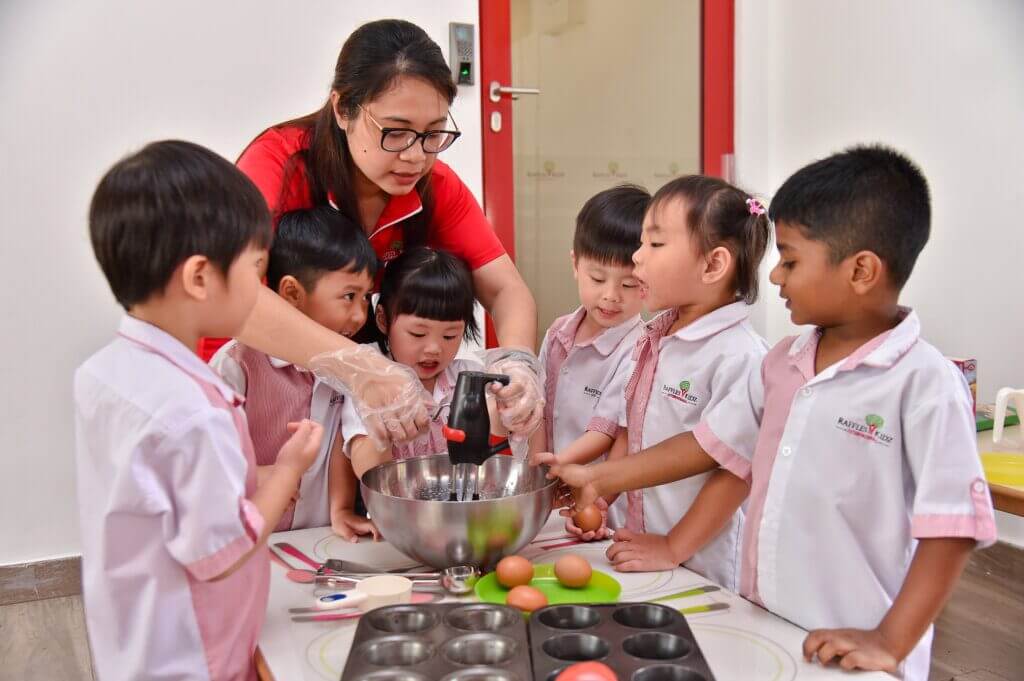Childcare, preschool, and kindergarten are terms often used interchangeably when parents are discussing early childhood programmes for their children. However, these terms represent different options and it is important for parents to understand the differences between childcare, preschool and kindergarten before making informed decisions.
Preschool: Childcare Centres and Kindergartens
In Singapore, the term “preschool” is commonly used to refer to any institutions that provide both childcare services and educational programs, which include childcare centres and kindergartens. To ensure both childcare centres and kindergartens provide quality preschool programmes, the Early Childhood Development Agency (ECDA) is responsible for setting standards, training early childhood professionals, and serving as the regulatory agency for the early childhood sector in Singapore. According to statistics given by ECDA, there are a total of 1,607 childcare centres and 373 kindergartens in Singapore as of 2022. To understand which option is best for your child, it is important to consider your family’s needs and evaluate these factors.
Age Group of Children
Childcare centres in Singapore typically cater to children from 18 months to 6 years, with some offering infant care programmes for babies aged 2 to 17 months. In comparison, kindergartens in Singapore are only open for children between the ages of 3 to 6 years old.
Class Programmes
The type of programmes offered by childcare centres in Singapore varies from centre to centre. Most childcare centres offer full-day programmes which operate from 7am to 7pm and include a full range of learning activities, as well as meals, showers, and nap time. Additionally, some childcare centres offer half-day programmes which runs from 7am to 1pm or 1pm to 7pm, and some flexible programmes depending on the centres.
Comparatively, kindergartens in Singapore usually last 3 to 4 hours a day and can run from 8am to 11am or 12pm to 3pm, varying from kindergarten to kindergarten. Meals, showers and nap time are not included as well due to the shorter duration but snack options may be available in some schools.
Educational Approach
When selecting a preschool, it’s important to consider the learning approach that best suits your child’s needs. Some childcare centres follow a specific early education approach such as Montessori, Reggio Emilia, and Wardolf, while others adopt a mixed approach that includes local elements in order for their children to have a smoother transition to primary school. Childcare curriculums are also generally more comprehensive and include a variety of hands-on learning and enrichment activities to develop children’s motor skills, creative thinking, and life skills.
For kindergartens, while having the same objective of preparing children for formal education, their curriculum focuses on the core subjects instead since they only have 3 to 4 hours to complete a day’s learning.
Teacher-Student Ratio
According to EDCA, childcare centres have to adhere to the teacher-student ratio depending on the age of the child. Class sizes are kept smaller for younger children and grow as they progress to ensure every child’s needs are met. For kindergartens, their teacher-student ratio differs according to the age of the child as well but it is typically larger than some childcare centres, with younger children being in a class of 15 children to one teacher and one assistant teacher. Older children may be part of a class of 20 to 25 students, with one teacher in charge.
School Holidays
Childcare centres in Singapore tend to only close on Saturdays and/or Sundays, in addition to public holidays and closed days for staff training. On the other hand, kindergartens in Singapore follow the same school terms and holidays as primary schools, based on the dates released by the Ministry of Education (MOE).
Government Subsidies
For childcare centres in Singapore, subsidies are offered for Singapore Citizen children whose mother or single father works 56 hours or more per month. The subsidy amount depends on factors like household income and the type of childcare programme enrolled. For kindergartens in Singapore, there are currently no subsidies. However, lower-income families can apply for financial assistance under the Kindergarten Fee Assistant Scheme (KiFAS) if their child is enrolled in an Anchor Operator or MOE kindergarten. For in-depth information on subsidies and financial assistance, you can visit the ECDA website to find out more.
Choosing the Best Preschool in Singapore
When deciding on a preschool for your child, be it childcare or kindergarten, consider other factors such as location, learning environment, school culture and teachers, as well as awards and reviews. It is also beneficial to schedule a visit to the preschools that meet your criteria, allowing you and your child to assess the learning environment firsthand.
At Raffles Kidz, we aim to provide the best care for our children through a holistic and bilingual Montessori/Inquiry-based learning approach to prepare them for primary school. A variety of enrichment activities are also included to provide children with concrete experiences in the exploration of art, culture and cookery, to build their creative thinking and life skills. Our childcare centres are also purposefully designed to include indoor facilities such as spacious classrooms and learning pods, as well as outdoor facilities such as water play areas, playgrounds, and bicycle tracks. If you are interested in finding out if Raffles Kidz is the childcare centre you have been searching for, book a school tour today!


